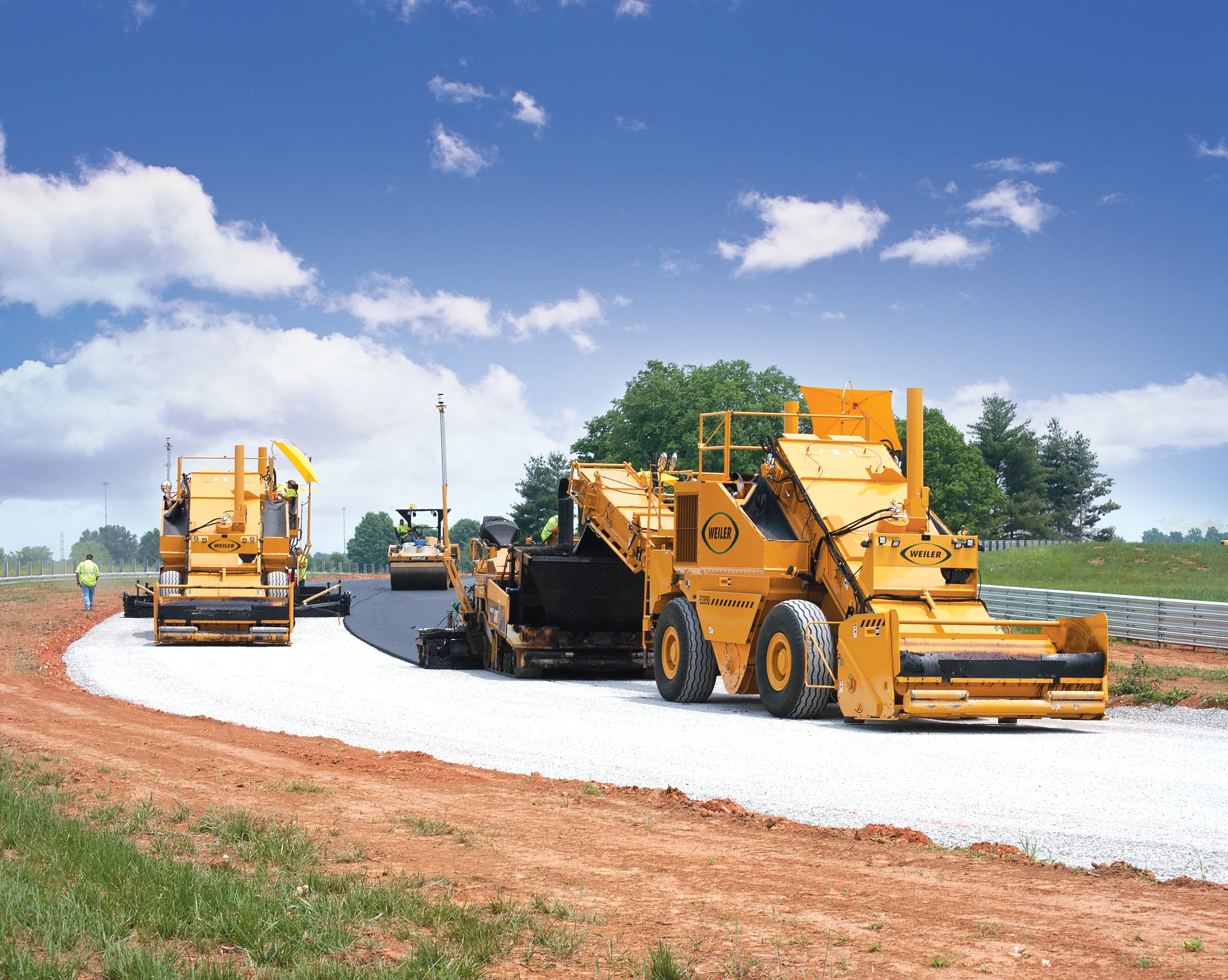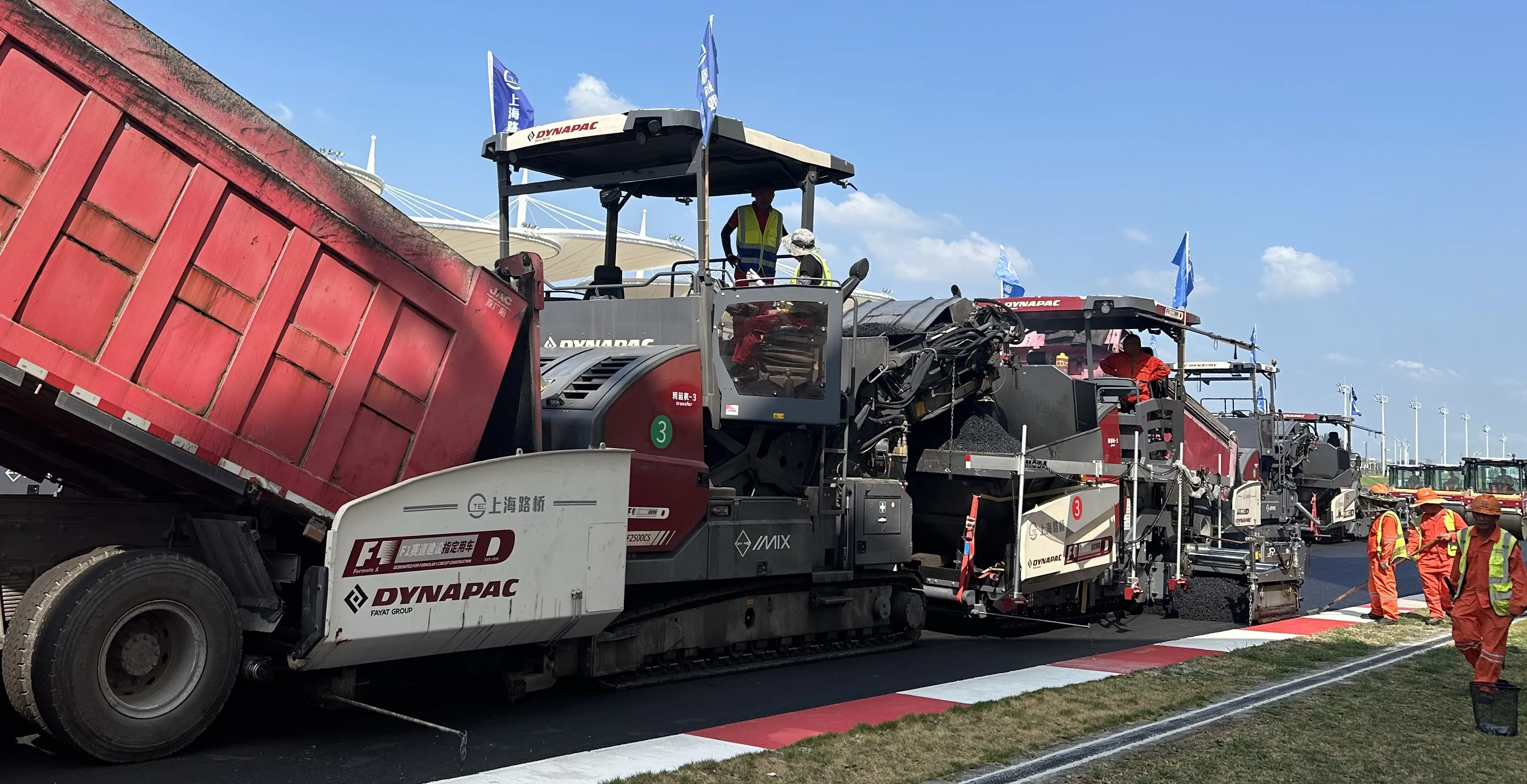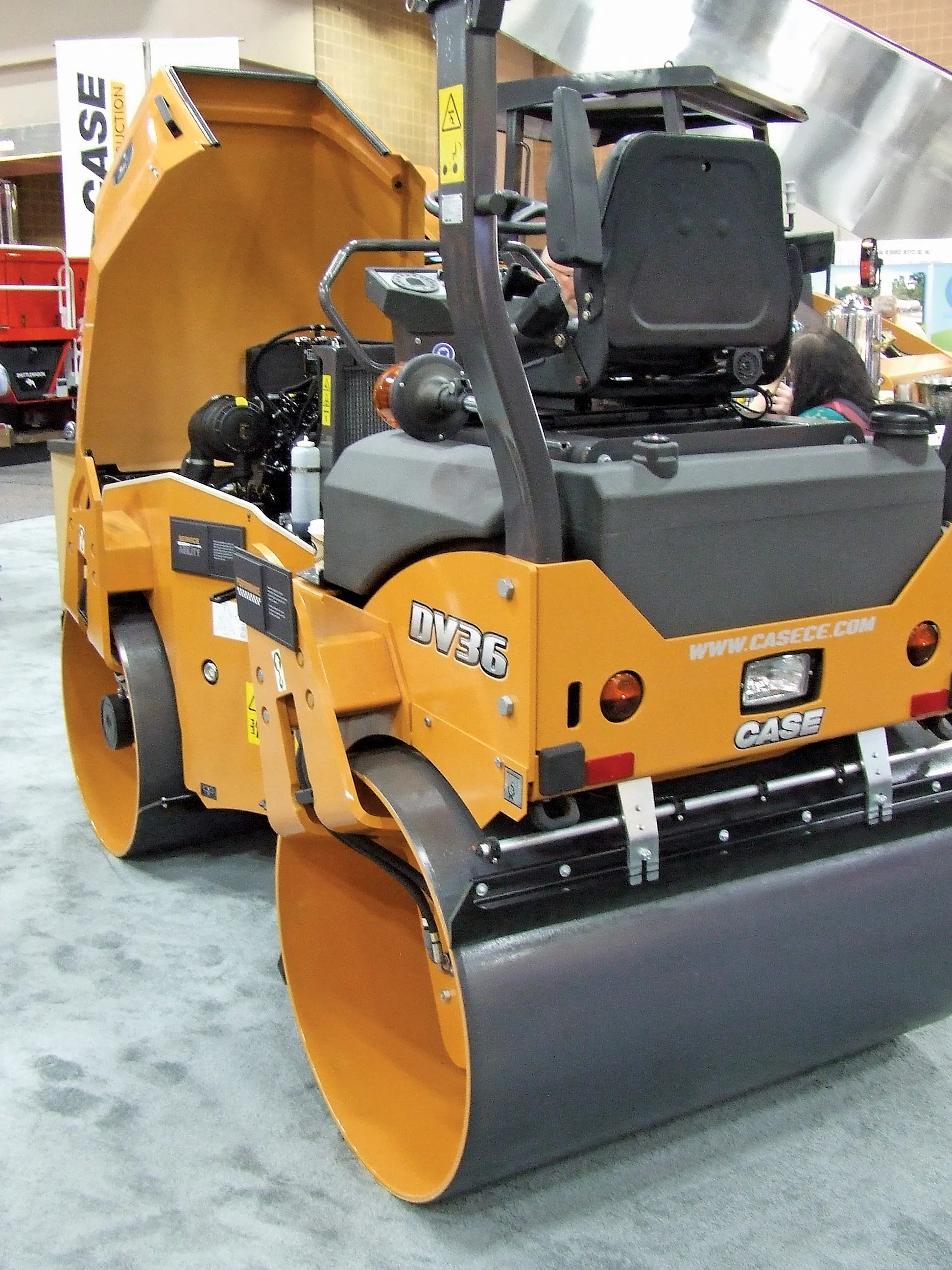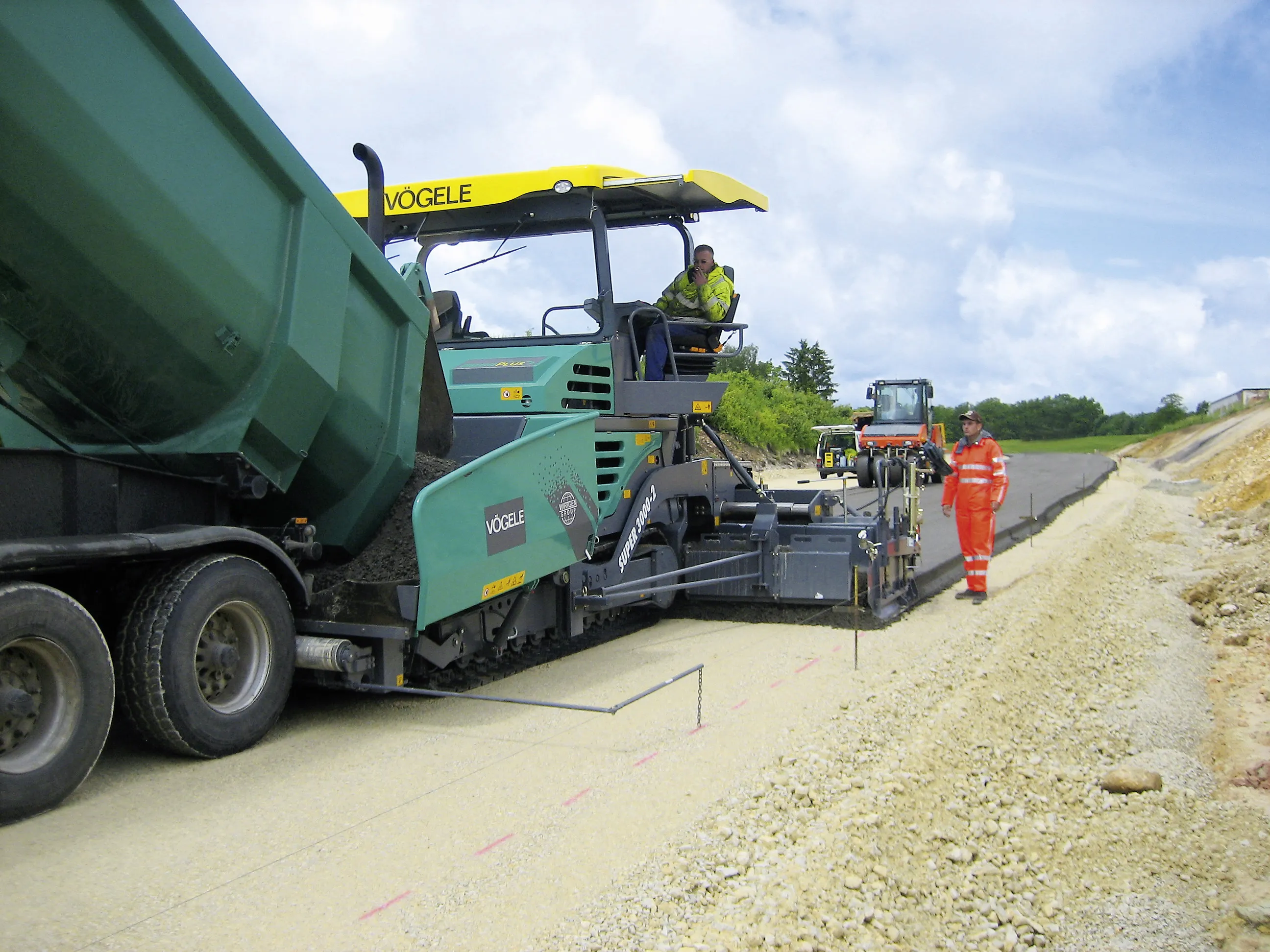A professional drag race takes only a few seconds. But in these brief moments, everything – including the track surface – must be absolutely perfect.
Apart from having excellent grip, the track must also be completely even. So, when Stange Asfalt was rehabilitating the Gardermoen Raceway near Oslo - Norway’s only permanent dragstrip – the company used state-of-the-art equipment supplied by VÖGELE and Hamm.
On the dragstrip, the drivers accelerate up to top speeds of more than 500kph within seconds. After
March 28, 2017
Read time: 2 mins
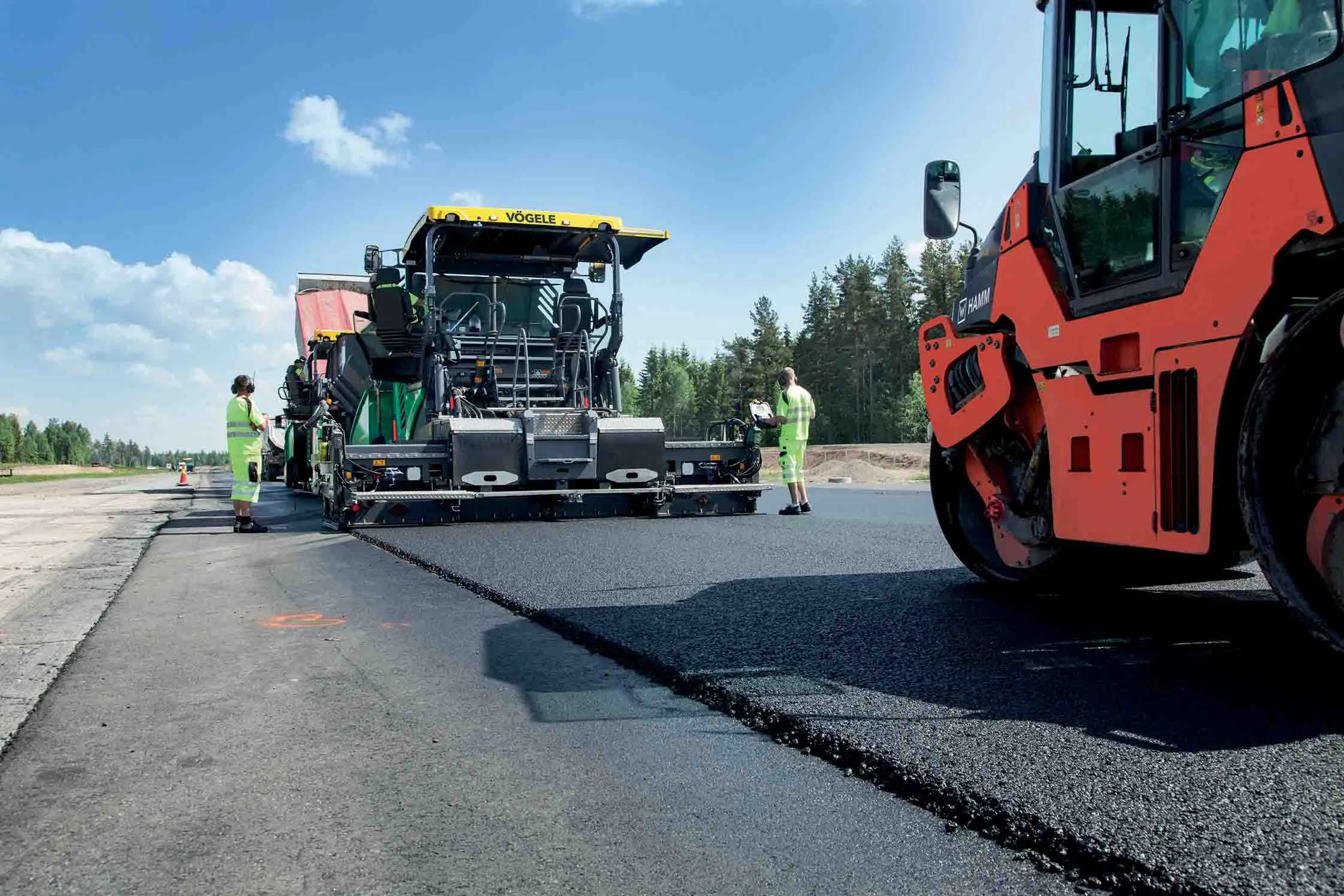
A professional drag race takes only a few seconds. But in these brief moments, everything – including the track surface – must be absolutely perfect.
Apart from having excellent grip, the track must also be completely even. So, when Stange Asfalt was rehabilitating the Gardermoen Raceway near Oslo - Norway’s only permanent dragstrip – the company used state-of-the-art equipment supplied by VÖGELE and228 Hamm.
On the dragstrip, the drivers accelerate up to top speeds of more than 500kph within seconds. After a quarter of a mile – around 400m - the race is already over and the braking parachute is deployed. For this reason the track itself must meet stringent evenness requirements. The tolerance range on the Gardermoen Raceway was only ± 2mm across a width of 4.5m and a crown with a slope of exactly +1° was specified.
To achieve this, Stange Asfalt opted to use a SUPER 1900-3i working with two VÖGELE multi-cell sonic sensors for grade and slope control. To guarantee continuous paving without interruption, a VÖGELE PowerFeeder type MT 3000-2i Ofiset was used for material feed.
Next, Hamm DV 70 VO and DV 90 VO rollers - each equipped with vibratory and oscillating drums - compacted all three layers of the new asphalt pavement. The quality of the machines and the experience of the Stange Asfalt team in meeting exacting quality levels meant everyone was a winner at Gardermoen Raceway.
Apart from having excellent grip, the track must also be completely even. So, when Stange Asfalt was rehabilitating the Gardermoen Raceway near Oslo - Norway’s only permanent dragstrip – the company used state-of-the-art equipment supplied by VÖGELE and
On the dragstrip, the drivers accelerate up to top speeds of more than 500kph within seconds. After a quarter of a mile – around 400m - the race is already over and the braking parachute is deployed. For this reason the track itself must meet stringent evenness requirements. The tolerance range on the Gardermoen Raceway was only ± 2mm across a width of 4.5m and a crown with a slope of exactly +1° was specified.
To achieve this, Stange Asfalt opted to use a SUPER 1900-3i working with two VÖGELE multi-cell sonic sensors for grade and slope control. To guarantee continuous paving without interruption, a VÖGELE PowerFeeder type MT 3000-2i Ofiset was used for material feed.
Next, Hamm DV 70 VO and DV 90 VO rollers - each equipped with vibratory and oscillating drums - compacted all three layers of the new asphalt pavement. The quality of the machines and the experience of the Stange Asfalt team in meeting exacting quality levels meant everyone was a winner at Gardermoen Raceway.


